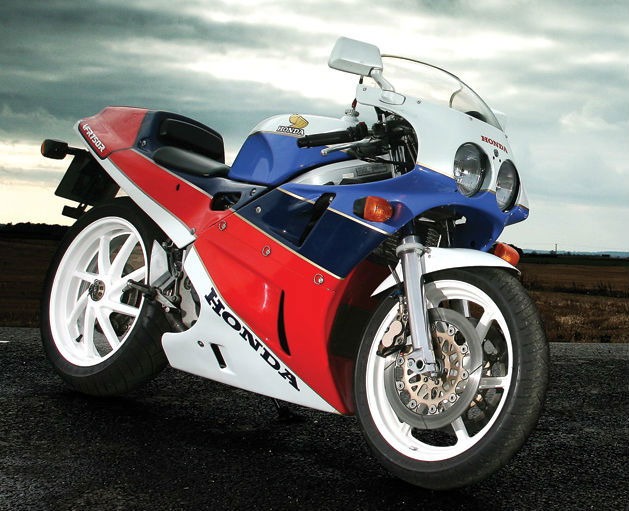Lunchtime debate: The 1980s was the best decade for motorcycles
Never has so much development been crammed into 10 years, argues Visordown's anonymous industry expert

WE’RE hitting that time of year again when every bike firm is preparing to unleash their latest and greatest creations for the new 2015 model year. But I’m not feeling the usual sense of excitement.
Perhaps it’s because I’m getting old(er), but back in the ‘90s and even the 2000s the anticipation that accompanied the unveiling of every new model was a bit like the run-up to Christmas was as a kid, knowing that you’d soon be tearing the wrapping off something new and praying that, when you did, it wouldn’t be a disappointment.
These days, though, that anticipation is missing. Don’t get me wrong, the new bikes that will be launched for 2015 are, I’m sure, going to be some of the best machines that have ever been made. They’ll be flagged as faster, more powerful, lighter, better handling, blah-blah-blah. And it will all be true. But efficient design isn’t the stuff of dreams. A showroom-stock BMW S1000RR will probably run rings around a GP bike from a couple of decades ago – but perhaps that’s the problem, because given the chance I know which I’d prefer to do a few laps on, and it wouldn’t be the BMW.
The 1980s were the high water mark, the time when that new-model anticipation was most easily justified. Not because the bikes of the era were the best but because they were the least predictable, and the development leaps were so great.
The ‘70s had its heroes too, and the ‘90s saw the development of the superbike as we know it now – the Fireblade, the R1, etc – as well as the maturing of genres like adventure bikes. But the 1980s were in another league.
Just look at the bikes that we started the decade with – Z1000s, CB750s, GS1000s, XS1100s – and compare them to the flagships of 1989. We’d gone from the era when 130mph was fast to one where 170mph or more was on the cards. Going from the air-cooled, twin-shock CB1100 to the RC30 took just six years. That’s real progress.
But it wasn’t just the performance flagships that made the '80s great. It was the sheer diversity. It was the heyday for 250cc two-strokes, not to mention the likes of the RG500 and NS400R, but it also saw the introduction of miniature engineering masterpieces like the VFR400R NC30 and the rash of fabulously tiny 250cc four-cylinder machines from all the Japanese manufacturers. Air cooling was ubiquitous at the start of the decade and virtually gone by the end of it. The four-valve-per-cylinder four-stroke engine went from the exception to the rule.
Yet designers still found the time – and manufacturers still found the brave pills – to make weird oddballs in the midst of it all. Turbocharged machines like the XJ650 Turbo, GPz750 Turbo, CX650 Turbo and XN85 might have been a dead-end, but they certainly added colour. And Honda did most of its work on the NR oval piston technology during the ‘80s, too.
Despite all the weird creations, the huge R&D expenses and the engineering cock-ups that the decade saw, it also saw the creation of most of the genres of bike that we recognise today. At the start of the ‘80s, there was no ‘class’ of four-cylinder, 600cc sports bikes. There were no ‘dual sport’ or ‘adventure’ bikes. There weren’t even really many dedicated tourers or sports-tourers. By the end of the decade we had six-cylinder Goldwings, we had the CBR600, we had the BMW GS. We also had the VFR750 and a host of mainstream machines that are still relevant today. Put it this way; there are plenty of 1980s bikes I’d still be happy to own and run on a regular basis, even rely on. While there are some ones from the ‘70s or earlier that I’d like to own, I can’t think of any that I’d really expect to start every day or cover serious mileage on.
The ‘80s were, looking back, the definitive decade for bikes. Unless you think differently, in which case, feel free to rip my arguments apart below…



